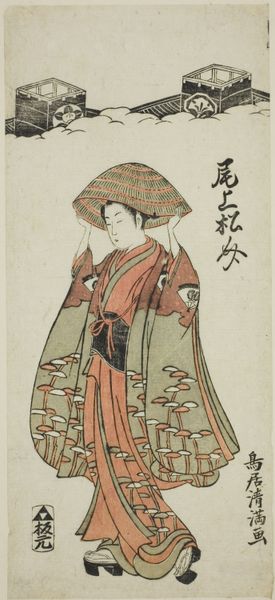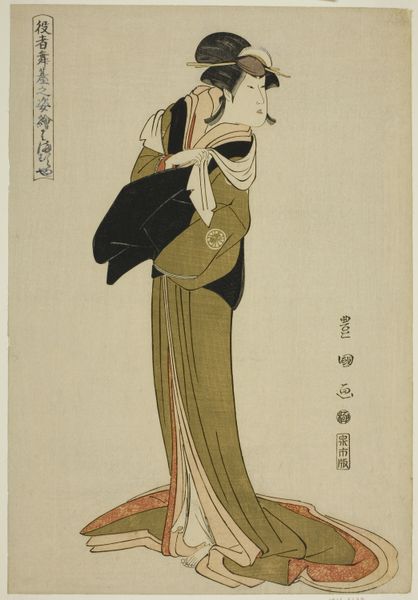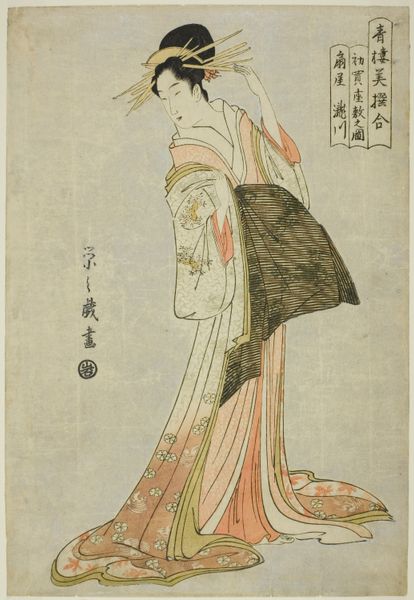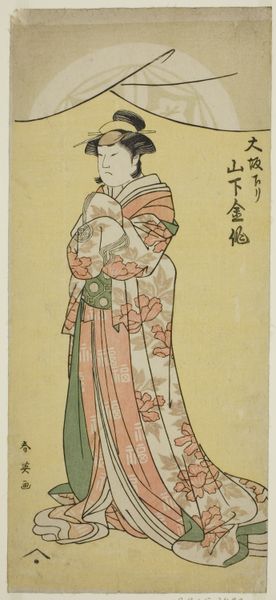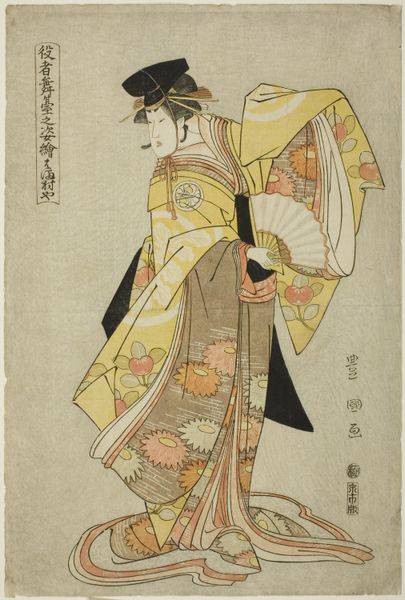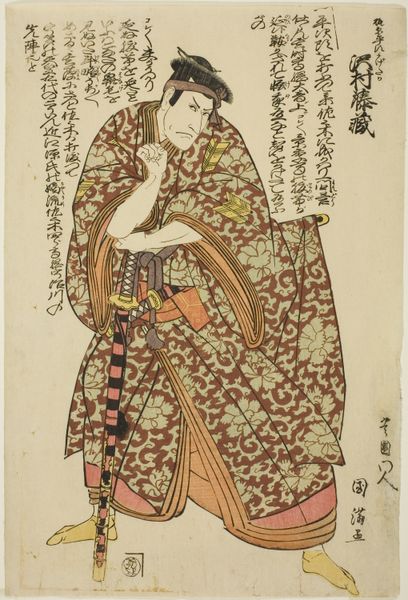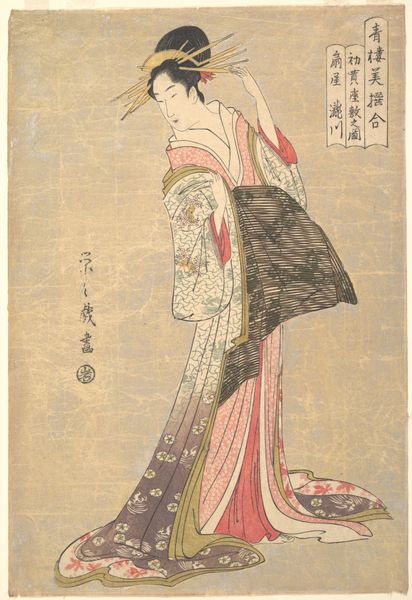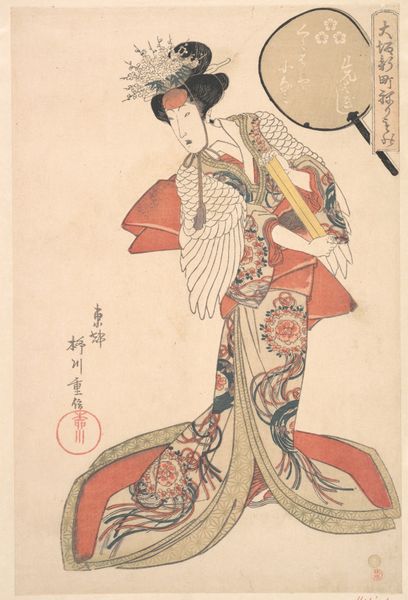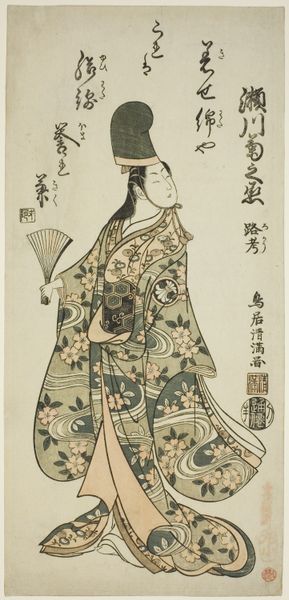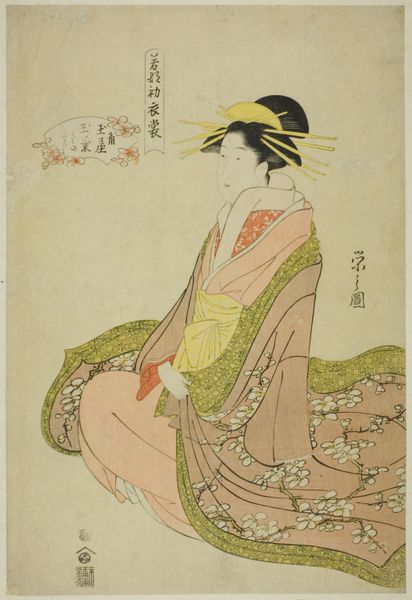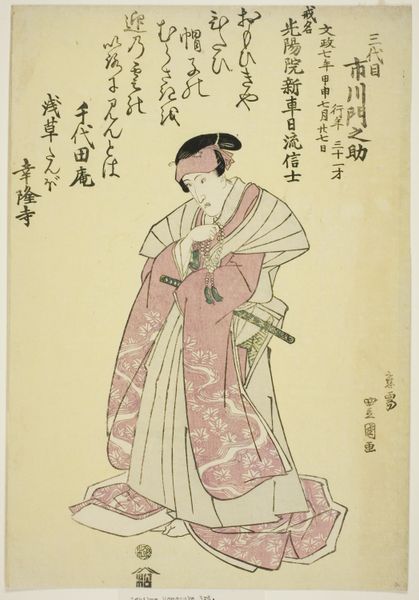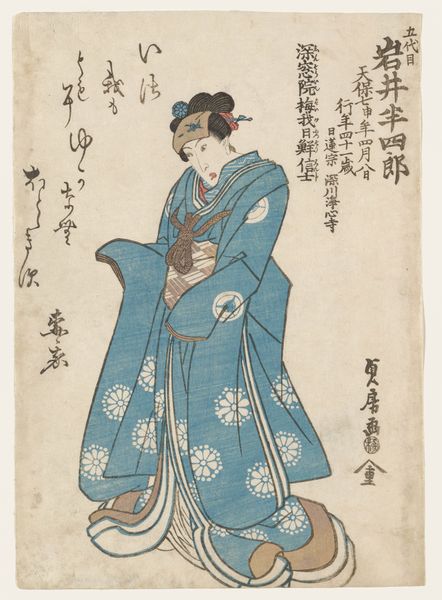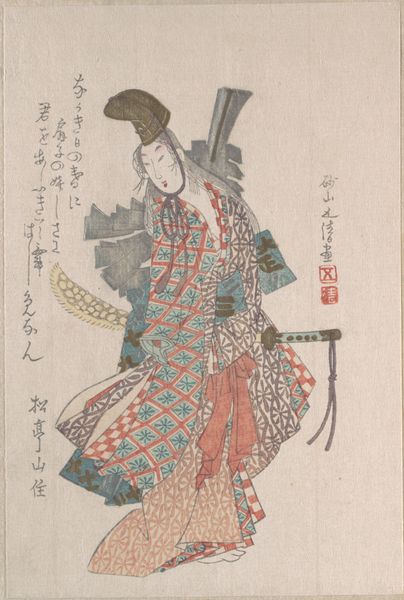
Yamatoya: Iwai Hanshiro IV as Katanaya Ohana, from the series "Portraits of Actors on Stage (Yakusha butai no sugata-e)" 1794
0:00
0:00
print, woodblock-print
#
portrait
# print
#
caricature
#
asian-art
#
caricature
#
ukiyo-e
#
figuration
#
historical fashion
#
woodblock-print
#
genre-painting
Dimensions: 37.4 × 24.4 cm
Copyright: Public Domain
Curator: Let's take a look at Utagawa Toyokuni I's woodblock print from 1794, now at the Art Institute of Chicago, titled "Yamatoya: Iwai Hanshiro IV as Katanaya Ohana, from the series 'Portraits of Actors on Stage.'" What strikes you first? Editor: The constrained, almost mournful, color palette. The predominantly mauve robe feels so heavy, weighing down the figure and emphasizing the stark asymmetry of the composition. Curator: Toyokuni I, working within the Ukiyo-e tradition, was deeply embedded in the floating world of Kabuki theater. These actor prints were hugely popular commodities. Think of them as early forms of celebrity endorsements. Editor: Right, so this wasn't simply artistic expression; it was a commercially driven project showcasing Iwai Hanshiro IV. The emphasis on detailed costume—note the geometric patterns and crest—certainly points to that performative, manufactured image. And even the way the garment seems to drape and flow—it’s almost sculptural in its visual weight, drawing the eye to the intricacies of form and color relations rather than human connection. Curator: Precisely. These prints democratized access to Kabuki stars for those who couldn't afford theatre tickets, acting almost as a kind of merchandise. And it wasn't only about surface appearance. Toyokuni was working at a fascinating moment where artisan workshops produced these prints. Different crafts persons were responsible for carving the woodblocks for each colour and the print production line was quite intensive. Editor: You can clearly see that layering in the prints' coloration. But despite the complex craftsmanship, for me, the actor's contorted pose steals the show. Notice how the hands awkwardly clutch his clothing. What statement is that intended to produce? Curator: It's a moment of both stylized theatricality and perhaps, vulnerability. Kabuki roles often demanded actors to embody exaggerated emotions and characters, in this instance the rendering feels almost comedic. Editor: Agreed, there is caricature. Toyokuni gives us an exaggeration of a feeling being performed rather than sincerely felt. A reminder perhaps of how carefully constructed our realities are. Curator: And a fascinating look at the intersection of craft, celebrity, and social mobility in Edo-period Japan. Editor: Yes, the formal qualities work to express societal values. A beautiful merging.
Comments
No comments
Be the first to comment and join the conversation on the ultimate creative platform.
